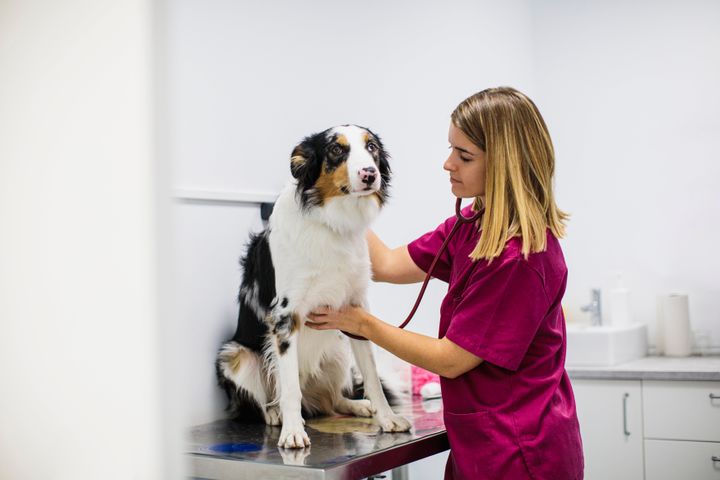Sad but true: We still haven’t figured out a way to verbally communicate with our pets. That means that the big questions, like “Are you a good boy?” and, more pertinently, “Are you feeling OK?” go largely unanswered.
While the former has one obvious answer (yes), the second is a bit more complicated. Pet owners are forced to rely largely on visual cues to glean insight into their dog’s health. That includes the frequency and appearance of their bowel movements.
There’s not really a such thing as “normal” when it comes to frequency, according to Dr. Gabrielle Fadl, director of primary care at Bond Vet. “It can vary depending on the dog’s age, diet and individual factors,” she said. “Generally, most dogs have one or two bowel movements per day.”
The same logic applies to appearance, too. “Diet, hydration, exercise and underlying health conditions” are all factors that can determine what a dog’s poop looks like, Fadl explained.
With so many variables, what should a discerning dog owner do if they sense something’s off on their daily walk? What scenarios necessitate a trip or call to the vet? We got the, well, scoop.
Blood In The Stool
Blood in the stool can be alarming, but it doesn’t always mean there’s something terrible going on.
“It could be a number of different things,” said Dr. Brian Collins, a veterinarian with the Cornell Richard P. Riney Canine Health Center. “Stress can cause blood, so can a change in diet, eating foreign materials like rocks or bones, parasites or cancer.”
If your dog is otherwise eating, drinking and acting as normal, Collins recommends starting with a call to the vet. “Run it by them,” he said. “They know the dog’s medical history, what meds they’re on, if any, that might be causing a problem, and will be able to determine if an appointment is needed and how urgently.”
Dark Or Tarry Stool
Dark or tarry stool is indicative of blood in the upper digestive tract, Fadl said. But it could also result from medication, such as an anti-inflammatory for arthritis, an ulcer, cancer or inflammation from eating something foreign.
This scenario similarly comes with a caveat: If it’s an isolated incident, with no other symptoms present like lethargy, vomiting or irregularities in eating and drinking patterns, there’s no need to panic.
“If you notice irregularities in your dog’s poop that persists for more than 24-48 hours, or if you notice additional concerning symptoms,” that’s the time to call the vet, Fadl said.
Lourdes Balduque via Getty Images
Diarrhea
Occasional diarrhea is pretty much par for the course when you have a pet, especially for puppies. But diarrhea that doesn’t clear up or go away on its own is a cause for concern.
“We don’t go to the doctor right away when we have diarrhea,” Collins said. “But I would say if I see a large volume of blood, dark or tarry diarrhea, if the dog is straining or having accidents in the house, to get to the vet immediately.”
Even if it is an isolated incident, Collins stressed that there’s nothing wrong with reaching out. “It’s keeping you up at night, or if they are having accidents in the house, I don’t want people to suffer in silence,” he said, adding, “If it’s a little on the soft side, call the vet ― it can never hurt to call.”
Straining Or Constipation
Constipation is not that common in dogs ― vets see it more often with cats, Collins said. So, if you notice your dog straining, or if their stool is extra firm or dry, it could be a number of things that would require a vet trip.
“Your dog might be dehydrated, or there might be an obstruction,” he said. “In that case, it would be important to bring them into the vet for an exam to make sure.”
Mucus In The Stool
Mucus can accompany irritation in the large bowel, and can come with other things like blood or appear on its own. “If it’s combined with other symptoms like diarrhea or blood, that can help us figure out where in the gastrointestinal tract the problem is,” Collins said. “It’s not super concerning, but could offer a clue.”
Ultimately, there is always going to be occasional irregularity in your dog’s stool. Green poop, for example, could be caused by something they ate or an issue with their liver or gallbladder. In any scenario, both Fadl and Collins said that the important thing to look out for is whether it’s happening in isolation, or along with any other out-of-the-ordinary behaviors.
“Remember that every dog is unique, and some variations in stool appearance can be normal,” Fadl said. “However, any persistent or significant changes warrant veterinary attention to ensure your dog’s health and well-being.”


